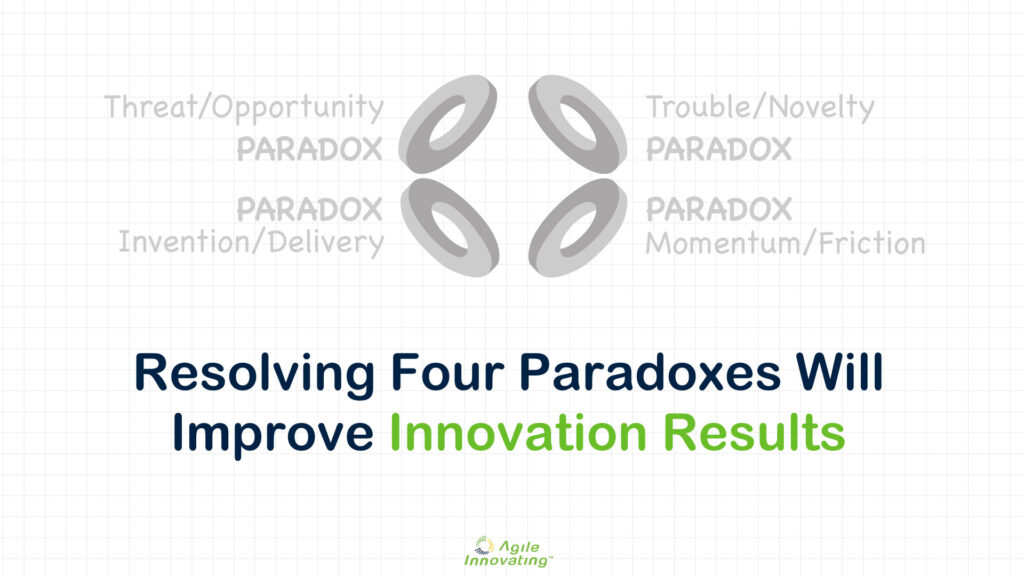
This article is for 𝐁𝐮𝐬𝐢𝐧𝐞𝐬𝐬 𝐋𝐞𝐚𝐝𝐞𝐫𝐬 who want more innovation but struggle with low innovation hit rate. It is concerned with the tradeoffs made due to two-factor variables that are actually unrecognized paradoxes.Recognizing the paradoxical relationship between some key two-factor variables, and resolving the paradox, creates a more successful innovating environment.
The primary issues and challenges involved in innovating are well known. You need to understand the customer context, have good ideas, a reliable development process, and the ability to manage change. You also need to productively deal with uncertainty.
Most Innovation Programs do not identify all the primary sources of uncertainty. Common sources of uncertainty, such as identifying the User Situation, specifying Problems Worth Solving, and managing a well-defined NPD Process, are recognized and addressed. But it is unusual to recognize that a major source of uncertainty is hidden in 4 Paradoxes.
The Threat / Opportunity Paradox
The Threat / Opportunity Paradox deals with the tradeoffs made when deciding whether your innovating focus is on Threats to Existing Sales (TES) or Opportunities for Future Profits (OFP). A TES driver focuses on short-term impact. An OFP driver focuses on longer-term impact. Resolving the short-term / longer-term impact question aligns the organization with the changes you want to make and why.
The Trouble / Novelty Paradox
The Trouble / Novelty Paradox deals with the tradeoffs made when deciding upon the new solution specification. A new solution must have enough novelty to get noticed by potential customers. But novelty is a transient experience and is only the basis for trial substitution of a new solution. The new solution must reduce the net user trouble and provide a better net user experience to be adopted. An insufficient balance of novelty and net improvement can derail an innovation.
The Invention / Introduction Paradox
The Invention / Introduction Paradox deals with the tradeoffs made in organizational capability in your Innovation Program. Invention capability is primarily based upon individual design skills working within a functional process structure. Introduction capability is primarily based upon an organizational process structure supported by individual change management skills. Invention capability without equal Introduction capability, or vice versa, will stymie innovation.
The Momentum / Friction Paradox
The Momentum / Friction Paradox deals with the tradeoffs between creating organizational momentum for change versus managing the dynamic friction generated by the organization to resist change. Too much friction will cause a low rate of change. Too much momentum will cause chaos in the short term, generating high dynamic friction in the long term, suppressing change. Managing the balance of Momentum to Friction is an essential innovation success factor.
Conclusion
There is always a level of uncertainty associated with inventing and introducing new solutions. Unresolved uncertainty within your Innovation Program increases the risk that a new solution will not be adopted in the marketplace. Recognizing and resolving the uncertainty hidden in the four paradoxes is a key factor in increasing your hit rate and getting more innovation faster.
🌱
A paradox fog
Uncertainty in two states
Balance to resolve
-Innovation Haiku, Kevin A Fee, January 17, 2024
